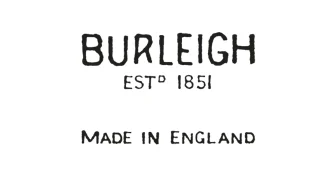Challenge
£40million KTP scheme helps transform companies: from traditional pottery to contemporary technology via a funded Knowledge Transfer Partnership.
Shortlisted in the Times Higher Education Awards 2018, for the Most Innovative Contribution to Business-University Collaboration, Burleigh Pottery and the University of the West of England (UWE) demonstrate how a funded Knowledge Transfer Partnership (KTP) can deliver powerful transformational change, uniquely accessing and embedding academic expertise.
Burgess and Leigh (the home of Burleigh) was formed in 1851, during the industrial revolution, and when the pottery industry was transforming economic processes and output. Occupying a state of the art facility in Stoke-on-Trent, built in 1888, Burleigh Pottery has been trading for over 150 years. Unfortunately, the decline in the pottery industry eventually took its toll on the company, being saved from closure by help from The Prince’s Trust in 2010. Denby Holdings took on the business and, at that point, only a process of transformation could turn this now loss-making business into a viable pottery once again.
Parts of the original building were re-purposed to house artists and provide skills and craft training; but Burleigh itself, now occupying a smaller footprint, was in need of specialist intervention to future proof underglaze tissue printing production, introduce digital technology, and rediscover technical and process knowledge lost through industry decline‚ and thereby create new opportunities for growth.
Outcome
That intervention came in the form of a Knowledge Transfer Partnership (KTP), a world-leading programme run by Innovate UK and delivered by the Knowledge Transfer Network, which connects organisations to the UK’s world class academic resources. Via a KTP, Burleigh Pottery joined forces with experts at the University of West of England (UWE) to apply pioneering academic research and marry new technologies with traditional craft skill.
That knowledge is now embedded in the production team, and has resulted in a factory output yield increase from 60% to 85%. The process established for engraving patterns on print rollers using contemporary technology has reduced the roller production time from months to a matter of hours. Allied to the new process, is the capture of selected original images from an archive of circa 500 hand engravings via a specially developed printing and scanning technique. The relative low cost of producing a roller in this method allows new designs to be tested in a commercially viable way before full production. This has allowed for a growth in Burleigh’s worldwide customer base.
Impact
This merger of traditional and new technology has made a fascinating KTP intervention for the academic team. The Associate benefitted from the expertise of the Centre for Fine Print Research, but knowledge transfer is a two way street, resulting in significant staff development. The success of the KTP gives relevant and interesting case studies and additions into teaching of relevant university modules in the curriculum for undergraduate and postgraduate students.
During the KTP, the partners formed a very close relationship and further opportunities to collaborate between Burleigh and UWE have since been embraced. The Associate has also joined the Company as Design Development Manager; all three partners have benefited from the KTP, a key requirement for any KTP scheme.
What they say
“Working within the structure of a KTP opened doors to training and experience within a condensed timeframe; this allowed me to learn and grow at an accelerated rate to meet real-world commercial, operational and academic challenges. Being a KTP Associate was a unique and thoroughly rewarding experience.”
“Here is an interesting account of a KTP introducing technology into a historic company with a unique process for putting pottery decoration under a glaze (making it dishwasher proof, not really thought of when invented in the 1780s!) A wonderful collaboration of technology and heritage has solved many technical problems and brought a boost to the deeply entrenched culture. A happy KTP with frequent success that ultimately met the objective of economically producing print rollers with high definition, enabling printing of Victorian and earlier patterns but allowing new designs to be featured in new markets.”







